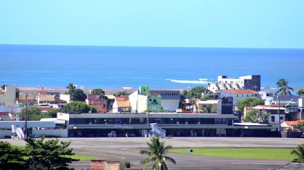Tempo de leitura: 2 minutos
Venezuela is preparing to replicate the experience of Special Economic Zones (SEZs), a mechanism with which more than 60 countries have tried to draw investment and accelerate economic growth, while under its avowedly socialist government a “silent neoliberalism” is gaining ground.
The aim of the SEZs is “to provide special conditions to gain the economic confidence of investors from all over the world, and productive development to put an end once and for all to oil rentism,” said President Nicolás Maduro when he promulgated the Organic Law of Special Economic Zones on Jul. 20.
The SEZs, “90 percent of which are in the global developing South, are a catalyst for economic restructuring processes and go hand in hand with the expansion of the neoliberal economy,” sociologist Emiliano Terán, a researcher with the non-governmental Venezuelan Observatory of Political Ecology, told IPS.
According to the United Nations Conference on Trade and Development (Unctad), there were 5,383 SEZs in the world in 2019 and another 508 under construction, of which 4,772 were in developing countries – 2,543 in China alone and 737 in Southeast Asia. In Latin America and the Caribbean there were 486 – 73 in the Dominican Republic, some 150 in Central America, seven in Mexico and 39 in Colombia.
SEZs are mainly commercial, such as free ports or free trade zones, where import quotas, tariffs, customs or sales taxes are eliminated; industrial, with an emphasis on improving infrastructure available to companies; urban or mining ventures; or export processing. Their main characteristic is that, in order to stimulate investment, especially foreign investment, there are more flexible regulations on taxes, investment requirements, employment, paperwork and procedures, access to resources and inputs, export quotas and capital repatriation.
One of the camping areas improvised by tour operators on La Tortuga, an island with no permanent population where tourist developments are being planned that are triggering environmentalist alarms, as they may severely affect the still almost pristine ecosystem of the island and its surrounding Caribbean waters.
In Venezuela, the first five zones decreed are the arid Paraguaná Peninsula, in the northwest; Margarita Island, in the southeastern Caribbean; La Guaira and Puerto Cabello, which are the largest ports, along the central portion of the Caribbean coast; and the remote La Tortuga Island, some 200 kilometers northeast of Caracas.
Paraguaná (an area of 3,400 square kilometers) is home to a large oil refining complex, and Margarita Island (1,020 square kilometers) has for decades been a sales tax-free zone and a tourist mecca for Venezuela’s middle class.
Puerto Cabello and La Guaira are essentially ports for imports to the populated north-central part of the country, whose main exports, oil and metals, are shipped from docks in the production areas in the east and west.






Os comentários foram encerrados, mas trackbacks e pingbacks estão abertos.